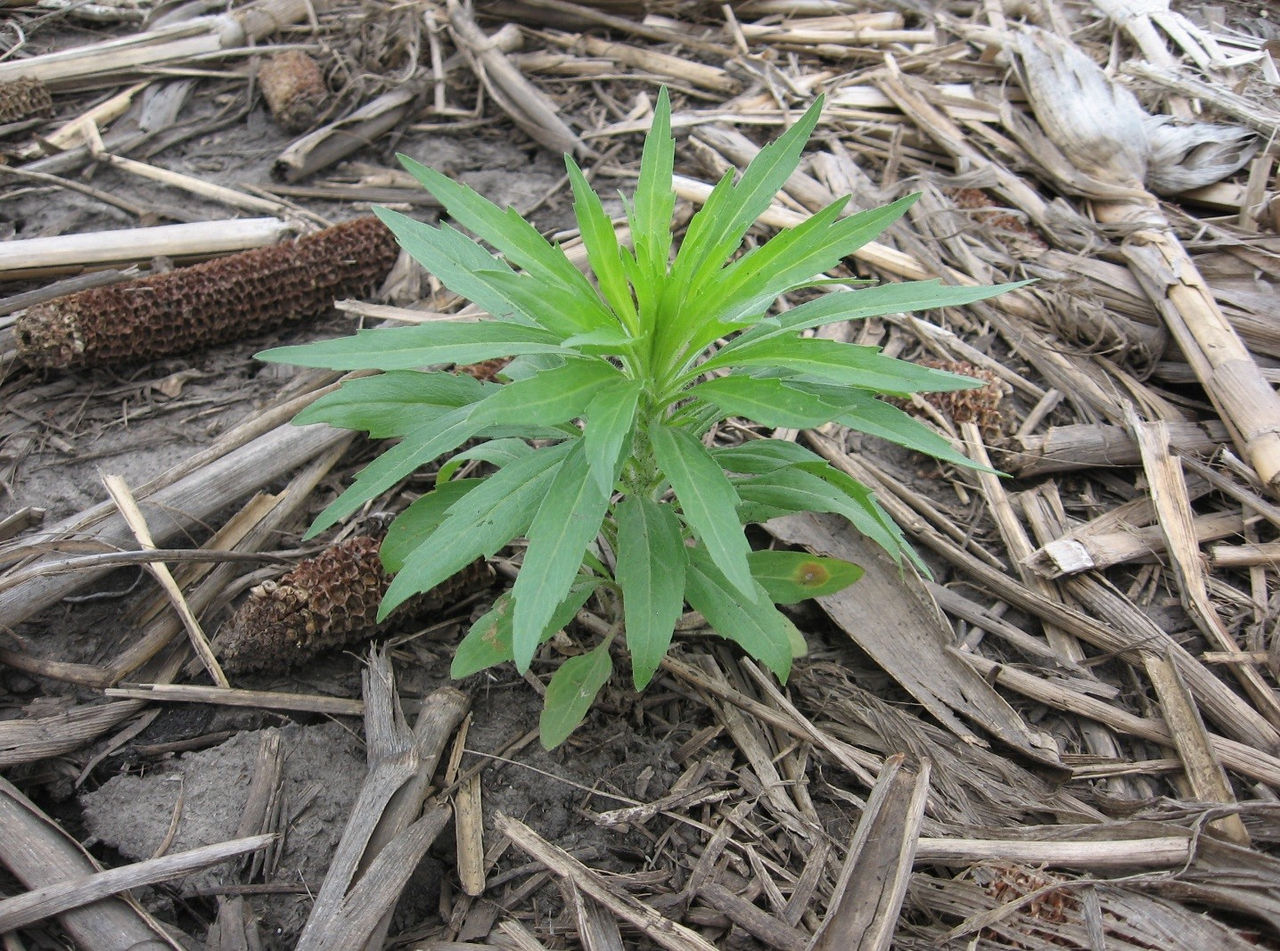Q. What is the benefit of early herbicide burndown applications?
Early burndown herbicide applications provide an opportunity to manage winter annual and other early emerging weeds before they become difficult to control. Horseweed (marestail) is a winter/summer annual weed that emerges in the fall or early spring as a rosette and can become difficult to control in the spring once it grows beyond 4 to 6 inches tall (Figure 1). It is best to control horseweed and other early emerging weeds with a burndown application that is applied when the weeds are small and easier to control. Ideally, weeds should be managed four to six weeks prior to planting to allow time for decomposition of plant material that helps provide a clean field and better seedbed. Early burndown applications also help to conserve valuable soil moisture that can be used later by the crop.

Q. Are tank mixtures needed in early burndown herbicide applications?
Preplant burndown tank mixtures can remove early weed infestations and provide broad spectrum foliar and residual weed control. Dicamba or 2,4-D is generally needed in burndown tank mixtures with glyphosate for postemergence control of tough broadleaf weeds. Including a herbicide with residual activity in the burndown tank mixture can help to extend early-season weed control and reduce in-season weed growth. When the intended planting date may be 30 days or more away, a residual herbicide in the burndown tank mixture can help to provide a cleaner field at planting.
Q. What are some limitations of early burndown herbicide applications?
The earlier in the spring herbicides are applied, the earlier in the growing season the level of weed control may decline below acceptable levels. Even with a residual herbicide added to an early burndown application, an additional burndown treatment may be necessary around the time of planting. It is also important to note that a residual herbicide in an early burndown application may not replace the need for a residual herbicide to be applied at planting. An additional residual herbicide applied at planting is generally needed to provide adequate control of summer annual weeds like waterhemp, Palmer amaranth, morningglory, crabgrass, and barnyardgrass. Residual herbicides also have planting interval or crop rotation restrictions and precautions that need to be considered if conditions warrant a change in planting intentions. Residual herbicide product labels need to be consulted for the maximum number of days ahead of planting that are required for corn and soybeans or other crops.
Q. When is it too cold to apply an early burndown herbicide application?
Fluctuating day and night temperatures are typical in the early spring. The efficacy of a burndown herbicide application can be reduced by cold temperatures. Daytime temperatures above 55°F and nights above freezing with sunny days helps to improve the effectiveness of early burndown herbicide applications. Weed control can be reduced when air temperatures fall below 40°F for an extended period of time. After a cold spell, it is best to wait for a few days of warm, sunny weather before applying herbicides and remember that herbicides work slower under cool conditions.
Watch the forecast closely and wait for more favorable temperatures to arrive before making a burndown application. It may not always be possible to delay an application because of the size of weeds or other considerations. If there is no alternative other than to spray and cool conditions are expected to persist after application, it may be necessary to increase the rate of the burndown herbicide or add a tank-mix partner to ensure the best chance of success.
Q. How can early burndown herbicide applications help in the management of herbicide resistant weeds?
Early burndown herbicide applications can help provide better control of problematic weeds like glyphosate-resistant horseweed because they are smaller and easier to control. A tank mixture of glyphosate plus dicamba is very effective for the control of small horseweed. Adding a residual herbicide to the tank mixture is also a pro-active approach in the management of herbicide resistant weeds. One of the most important benefits of including a residual herbicide in the burndown application is the opportunity to use herbicides with additional sites of action. It is increasingly important to tank-mix herbicides not only to increase the spectrum of activity for successful weed control but also to use multiple sites of action for the management of herbicide resistant weeds.
Sources:
Burndown herbicide programs for corn and soybeans. Weed Control Guide for Ohio, Indiana, and Illinois. www.extension.cropsciences.illinois.edu.
Sprague, C. 2019. Early-season weed control is important. Michigan State University Extension. https://www.canr.msu.edu.
Bradley, K. and Bish, M. 2014. When is it too cold to apply a burndown herbicide? University of Missouri. No-Till Farmer. https://www.no-tillfarmer.com.
Web sites verified 11/25/19. 2004_Q1
